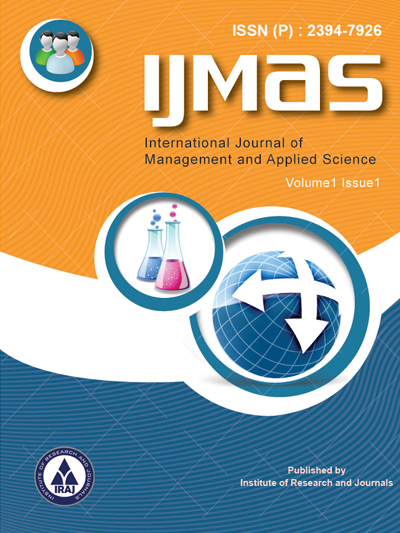Publish In |
International Journal of Management and Applied Science (IJMAS)-IJMAS |
 Journal Home Volume Issue |
||||||||
Issue |
Volume-3,Issue-11 ( Nov, 2017 ) | |||||||||
Paper Title |
The Impact of Foldable/ Collapsible Containers on Empty Container Management: A Case Study at Port Louis | |||||||||
Author Name |
M.Ramphul, Vani Ramesh, Vishal C Jaunky | |||||||||
Affilition |
Open University of Mauritius, Réduit, Mauritius REVA University, Bangalore, India Lulea University of Technology, Luleå,Sweden | |||||||||
Pages |
32-39 | |||||||||
Abstract |
With the tremendous growth of International trade and globalization, Empty Container Management (ECM) is no longer a matter which shipping liners can afford to ignore due to the increasing number of idle containers. As a matter of fact, a major component of the shipping line’s total operating cost is associated with the relocation of empty containers attributed mainly to the imbalance of the traffic on trade lanes. This situation is expected to further intensify in the future given the expected growth in trade imbalances amongst trading nations. Identified as structural and chronic, this problem, affects containerization at the global level with some regions facing an accumulation of empty containers and a shortage in other areas. According to the Boston Consulting Group (BCG), the repositioning of empty containers costs the shipping industry $15-$20bn a year, representing 8% of a shipping line’s operating costs. On the other hand, the accumulation and repositioning of empty containers have become an acute problem posing major operational and cost challenges for container ports.Studies carried out to address the ECM issues are quite diverse and from broad perspectives given that problem formulations and solutions are concerned with specific applications. It ranges from mathematical modeling/computational analysis towards optimization to the exploration of technological innovation. The use of foldable/collapsible containers is a technological innovation to move empty containers more efficiently by reducing the number of lifts and moves of empty containers at different handling points in the logistical chain, as well as, taking a reduced storage space both ashore and onboard. This paper puts in focus the potential of foldable/collapsible containers towards improving logistics management as an alternative to the current standard containers. With Port Louis, Mauritius, as a case study, a simulation exercise is performed with the use of foldable/collapsible containers as opposed to the current standard equipment. The results shows that using foldable/collapsible containers has the potential to reduce the projected overall amount of containers handled by the port in forthcoming years with substantial decrease (about 80%), as far as, the empty containers traffic throughputs is concerned. This implies lesser port land requirements for storage/transiting of containers, allowing by same substantial gain as capital costs saving and restructure expansion plans coupled with positive social and environmental implications. For the shipping lines, lesser empty containers will mean reduced vessels’ container slots used for the transportation and repositioning of empty equipment. Such “unproductive” and wasted slots on board vessels can be used as additional vessels’ capacity for the transportation of laden containers with positive impact on the shipping companies finance in terms of additional revenue. Thus, this innovative concept has the potential to allow the port industry gain substantial capital costs savings and re-structure their expansion plans whilst positively impacting on the cost of shipping for the liner operators. Technological innovation through the use of foldable/collapsible containers could therefore offer a complete new set of solutions to the ECR/ECM issues with positive contribution to operating costs and the environment and open avenues towards improving logistics management. Keywords - Imbalance of traffic, foldable containers, standard containers, logistics, Empty Container Management (ECM), Empty Container Repositioning (ECR) | |||||||||
| View Paper | ||||||||||